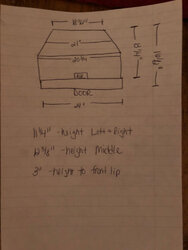Wolves1
Minister of Fire
My guess is when you cut it all the way down you have a weak draft, just open the air a little more. It’s probably happening when there is no flame. I don’t get the smell in my insert but I do get it in my stove shorter chimney then my insert.Has anyone noticed a smoke smell from the fan when they lower the air control? If I keep the air control half open or more I generally do not smell any smoke, but if I have close off the air I sometimes get a very faint smoke smell in the air coming out of the fan. It is so faint that you only smell it when in the room with the insert.




 ! I have tried a number of things too. Goo gone works the best
! I have tried a number of things too. Goo gone works the best